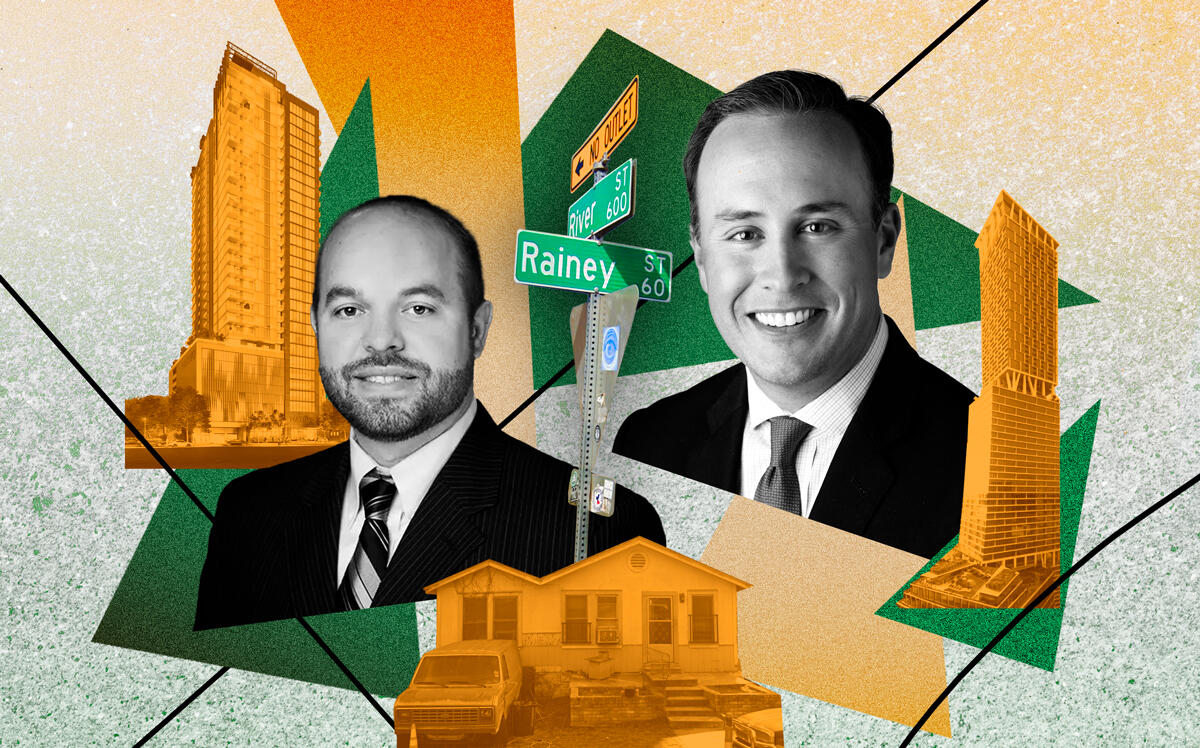A rusty Ford van sat parked on the front lawn of 701 River Street like a junkyard dog. The fading, overgrown bungalow showed more signs of decay than life, but in December, it hit the market asking $10 million. That may sound ridiculous, but given its location in the middle of the Rainey Street historic district, the home — or rather, the dirt beneath it — might actually be worth it.
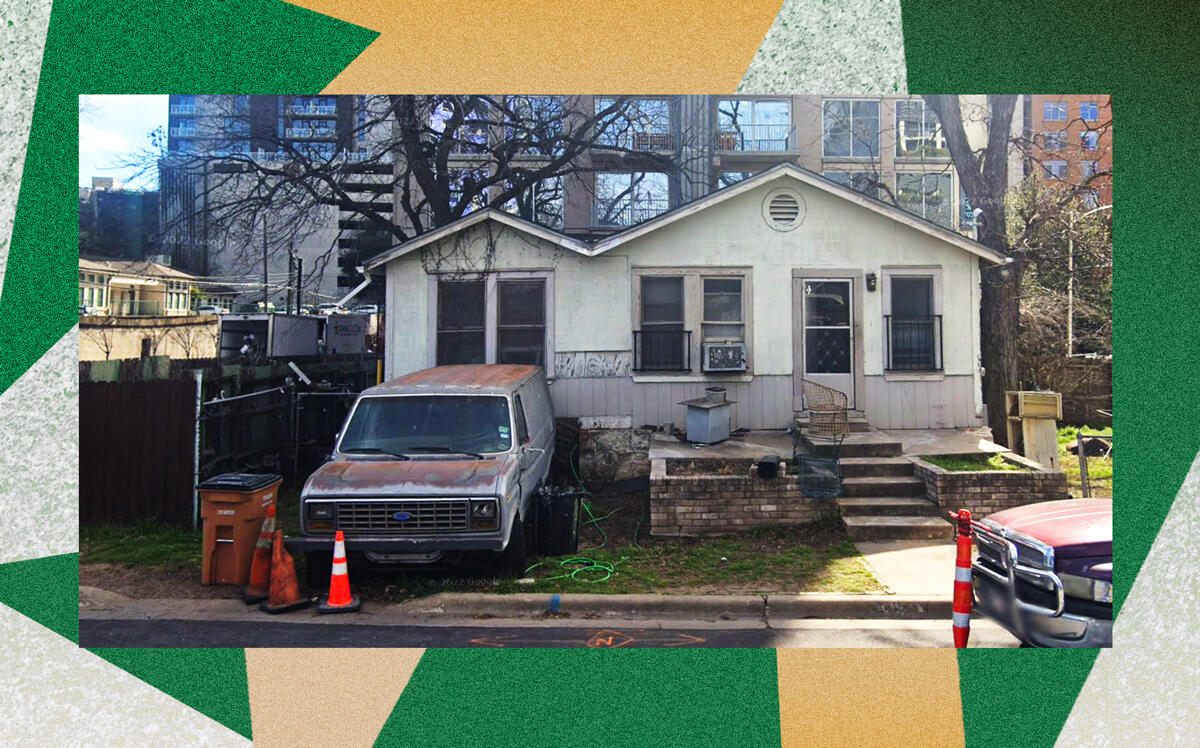
701 River Street (Google Maps)
In the four or so blocks around 701 River that make up the Rainey Street neighborhood, 11 residential highrises have either recently opened or are under construction. Another three are working through Austin’s permitting process. Consider it free air conditioning: The home stays cool in the Texas sun, given that it is almost constantly covered by shadows.
701 River, and the glass towers that rise around it, showcase the unprecedented growth that has come to Rainey in recent years. All told, roughly 3,800 apartments and more than 6.4 million square feet of development have either recently opened or soon will in a neighborhood that measures just a few square blocks. All that development has turned 701 River and the few other single-family homes left in Rainey into gold mines.
A similarly timeworn home, which in recent years was converted into a bar called Bungalow, reportedly sold for $9.3 million before it was bulldozed last year to make way for The Modern, Urbanspace’s 365-unit project that has already sold some of the most expensive condos in Austin.
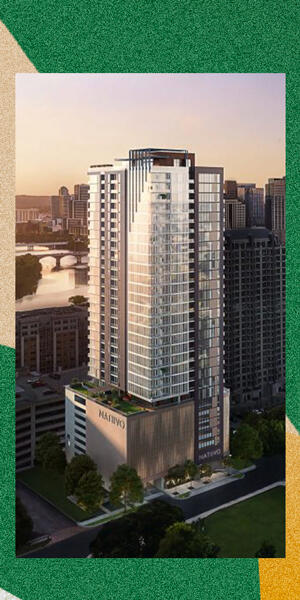
Natiivo (Pearlstone Partners)
Just behind 701 River stands Natiivo, a 249-unit condo tower built by Pearlstone Partners in 2022. According to Chris Zaiontz, a principal at Pearlstone, the firm bought the lot years ago as a speculative play, aware of the area’s potential but not yet certain how it would play out.
“You roll the dice, and sometimes it’s better to be lucky than good,” Zaiontz said. “We didn’t know it would be this good.”
Paydirt
For all the noise that’s been made about Rainey’s sudden bout of the condo crazies, the neighborhood has been in a defensive crouch for more than forty years. It rests at several Austin crossroads: that of East Austin and Downtown, of the Colorado River and the city, of I-35 and Austin on its way from Mexico to Canada. It’s convenient, cozy and beautiful, with some of the best river access in the city. For decades, the neighborhood’s greatest threat was not real estate, but nature.
The first homes in Rainey, turn-of-the-century, wood-frame Victorians, weathered a massive 1935 flood that nearly swallowed the Congress Avenue Bridge.

Congress Avenue Bridge in the 1935 flood, just west of Rainey. (Austin History Center, Austin Public Library)
As the construction of I-35 bisected Austin into a poorer, nonwhite east and more affluent west, Rainey found itself caught in the middle, just barely west of the highway but occupied by an increasingly nonwhite population. By the 1960s, some 60 percent of the houses on Rainey Street were occupied by persons with Hispanic surnames, according to a study by the city.
The center of gravity in Austin shifted downtown in the 1970s and 1980s, and Driskill Street at the northern end of Rainey lost “almost every historic structure,” according to researchers who nominated the neighborhood for the National Register of Historic Places. A 1981 documentary recently discovered by Towers.net captured Rainey in its iteration as a home for Austin’s Chicano lower and middle class.
“Right now, the struggle here in Rainey Street,” the film’s narrator said, “is land.”
As B-roll of kids playing on bungalow porches, a man watering neatly trimmed hedges and tree-lined streets, talking heads warned that Rainey was facing gentrification before the term had entered the lexicon.
Rainey’s rise
The modern era of Rainey’s transformative growth began in 2005, when the neighborhood was rezoned to match the Central Business District zoning. The move was a tacit admission that, despite the neighborhood’s single-family vibe, it was within walking distance of a fast-growing urban downtown in the midst of a tech boom.
The city council approved the rezoning 6-0, allowing for buildings in the neighborhood to achieve 15-to-1 floor-area ratios, or even higher by earning density bonuses. Even before developers could plan high-rises, pieces of the neighborhood began selling off.
“It was a developer’s playground,” Zaiontz said. With most of the rest of downtown Austin already spoken for, Rainey presented new opportunities in a booming city — the area’s population grew 37 percent between 2000 and 2010, according to figures from the Austin Chamber.
First there were the merely upscale residential towers and hotels, like Skyhouse, which opened in 2013 and included 320 rentals across 23 stories.
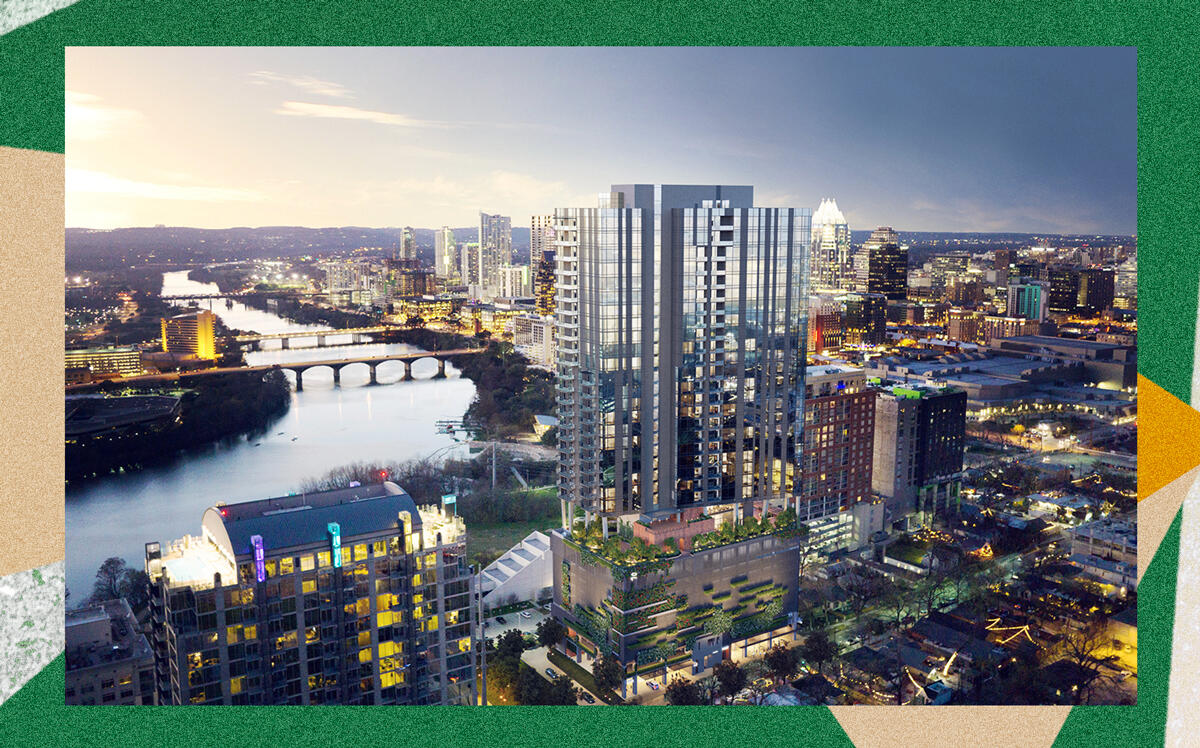
70 Rainey (Sackman Enterprises)
The growth escalated with 70 Rainey, a 34-story condo building developed by New York-based Sackman Enterprises. Planning began in 2015, and the project was one of the first in the neighborhood to go full-bore with Class-A condos. By the time it opened in 2019, 70 Rainey had become indistinguishable from the type of luxury buildings one finds in Miami or Los Angeles. Vines drape around the nine-story parking garage at the base of the building. On top, a series of tilted concrete pillars prop up the tower’s glass-walled residential portion.
“Everyone was like, ‘Wow, I don’t know if they’re gonna hit their price per square foot,’” Zaiontz said. Hit it they did.
Read more
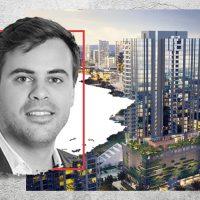

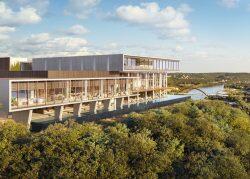
Zaiontz says his firm, Pearlstone, has staked nearly half its portfolio in Rainey. Shortly after finishing Natiivo, where units were intentionally sold to investors to be operated as Airbnbs, Pearlstone snagged an off-market plot for its second Rainey project. That tower, Vesper, has yet to open but will consist of 283 condos and is already 60 percent sold.
Pearlstone plans yet another condo building at 62 East Avenue, this time aiming to capitalize on a measly 12,000-square-foot lot that only came on the market because it was too difficult to build on for its previous owners.
The most ambitious project yet in Rainey, Lincoln Property Company and Kairoi Residential’s Waterline, will be a bona-fide New York tower planted on the Colorado River. The project will be a whopping 2.7 million square feet and stand 1,022 feet tall, making it the tallest building in Texas when it opens. The project broke ground in June thanks to a $675 million construction loan from Blackstone Mortgage Trust.
Lincoln and Kairoi have managed to cram 700,000 square feet of office space, 352 condos, a 251-key hotel and nearly 10,000 square feet of retail into the property. It will also include a 24,000-square-foot outdoor space with a bar, lounge and barbecue pit, as well as pedestrian bridges reaching over Waller Creek and into the Waterloo Greenway.
Notably, the developers have brought in national players over local firms in some key aspects of the project. Waterline is designed by Kohn Pederson Fox, the architects behind One Vanderbilt and Hudson Yards in New York.
“We wanted to bring an architect of that caliber to Austin,” said Seth Johnston, an executive at Lincoln.
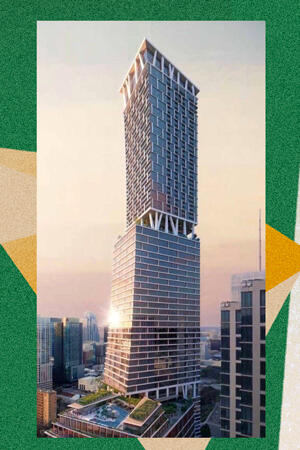
Waterline (WGI)
New York also provided the inspiration for Waterline’s hotel partnership. When Lincoln executives traveled to New York for a meeting with starchitect Bjark Engels, they stayed at 1 Hotel Brooklyn Bridge that, like Waterline, overlooks a river and bears all the marks of a five-star hotel.
“We were like, “Holy shit, this is our version of Waterline,’” Johnston said. Thus, the first seeds of 1 Hotel Austin were planted.
“We consider Rainey its own version of Soho or Tribeca,” Johnston said, and he isn’t alone in that estimation. As investment shifts east in Austin, Rainey once again finds itself at an extremely lucrative crossroads.
The Modern, which is being built at 92 Rainey, began sales with some of the most expensive condos in Austin, and is already basically sold out. To make room for 80 Rainey, developer Lincoln Ventures (no relation to Lincoln Property Company) picked up and moved a popular bungalow bar in hopes of preserving Rainey’s authenticity (although the bungalow-bar scene didn’t really pick up until the 2005 rezoning, and residents complained about the neighborhood turning into one big outdoor concert at the time).
Rainey is the Ship of Theseus — if you remove each plank of wood from a ship, one by one, at what point does the boat cease to be the same boat? As working-class homes turned to bars and bars now turn to luxury condos, is there an exact moment when Rainey stopped being Rainey?
Especially in Austin, which ranks first among major American metros for new residents as a percentage of total population, change is inevitable, and real estate makes that change visible. In Rainey, the It Neighborhood of the It City, there’s plenty of change to see.
